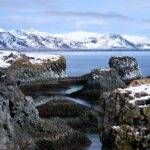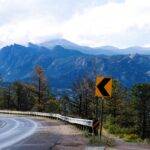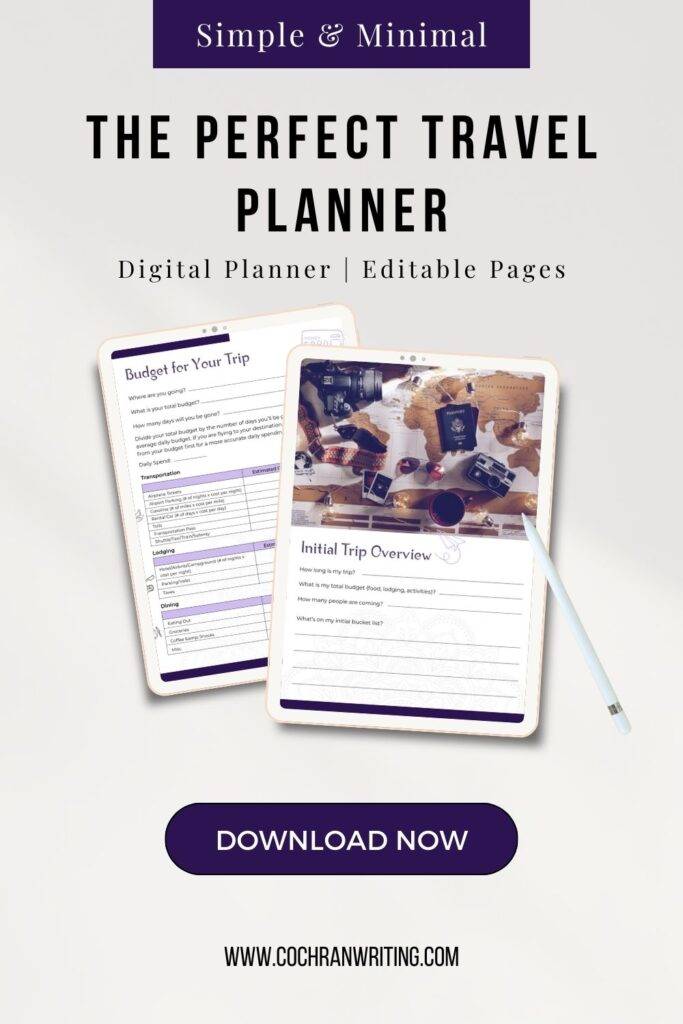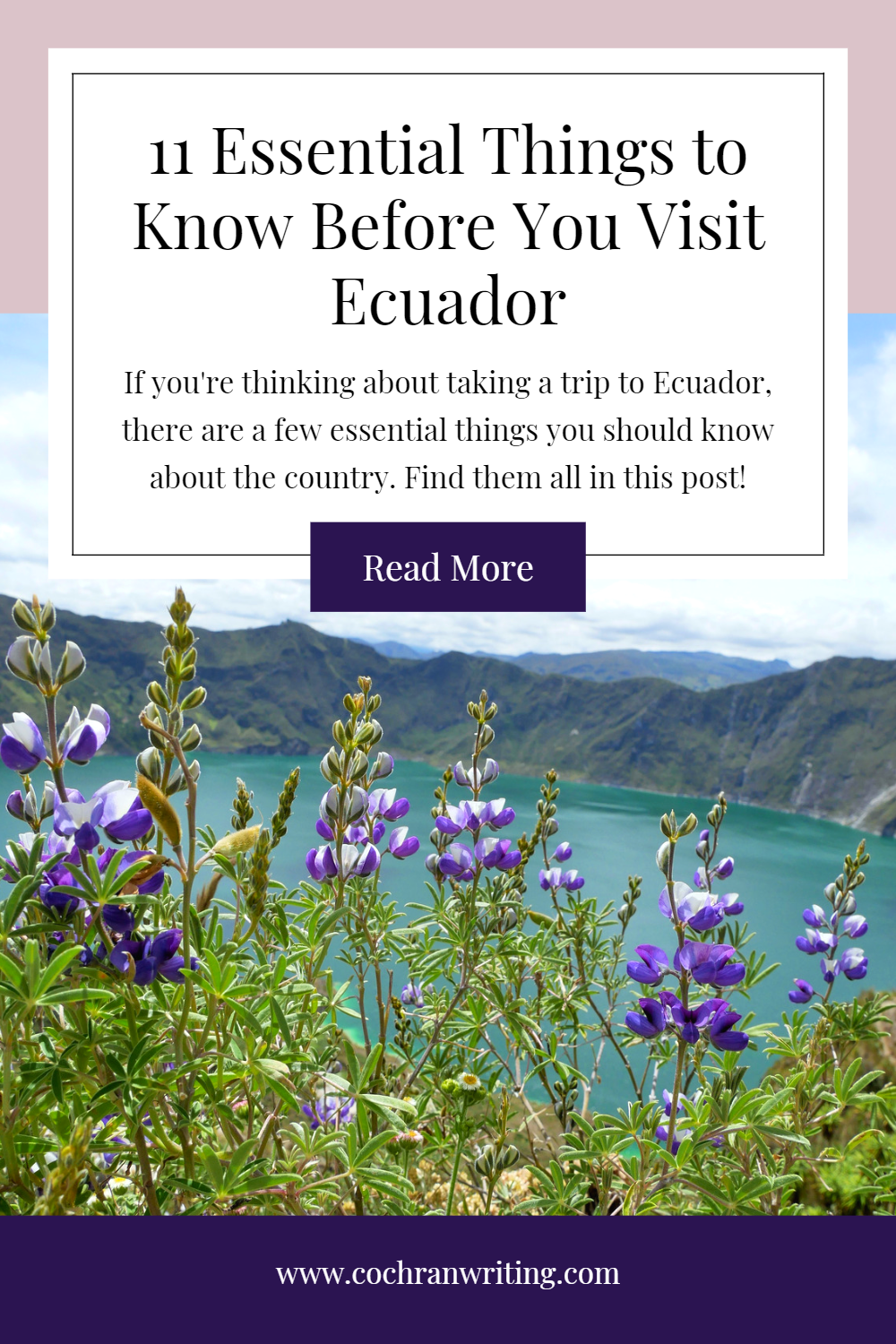Are you planning to visit Ecuador soon? Hooray! I have a feeling that you’re going to love it. But whether you’re a seasoned traveler or taking on your first international adventure, there are certain things you should know before exploring this beautiful country.
From its rich history to its vibrant culture and breathtaking natural wonders, Ecuador has a lot to offer. But it can all feel like a bust if you’re not prepared. That’s why I’ll be sharing 11 essential things you need to know before visiting Ecuador. From safety tips to helpful hacks, I’ve got you covered! So, read on to ensure your trip to Ecuador is as smooth and enjoyable as possible.
Things to Know for Health & Safety in Ecuador
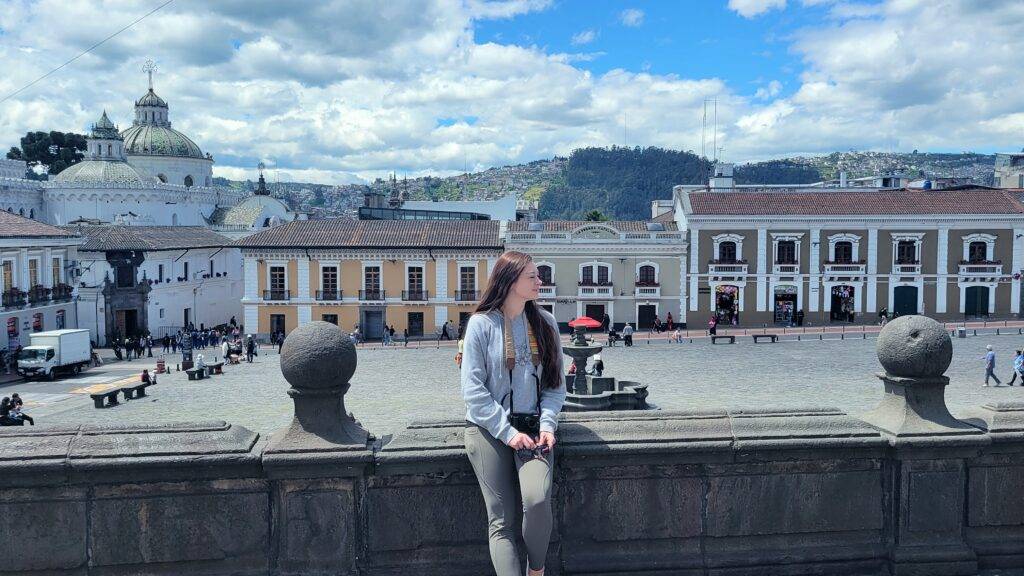
You shouldn’t go out alone at night.
Unfortunately, Ecuador isn’t the safest place for tourists, particularly at night. You should never leave your hotel alone at night; the larger your group, the better. Even in the more upscale parts of town, you can find yourself in a very unsavory situation if you’re alone, so it’s better to be safe than sorry. If you don’t have a group to go with, you’re better off taking a cab (have your hotel call a reputable company for you) instead of walking to your destination. Stay in a well-lit area and hide your valuables to make yourself less of a target.
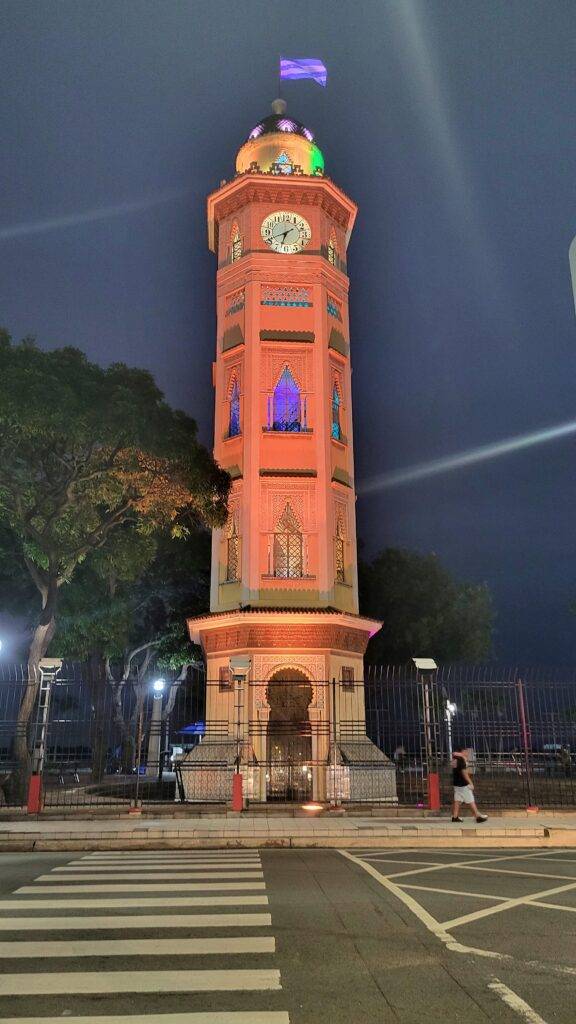
The exceptions to this would be the Galapagos and heavily-policed areas like the Malecon 2000 in Guayaquil. The Galapagos Islands are the safest place in Ecuador, and crime is non-existent. It’s perfectly safe to stay out late, walk around alone, and even “flash” your valuables (although I never suggest the latter)! And although they’re rare, you will find places that are heavily focused on safety, like the business district of Guayaquil. While parts of the city are known for violence, the boardwalk area has security and police officers every few hundred feet to ward off crimes of any sort.
It’s easy to get altitude sickness in the Andes.
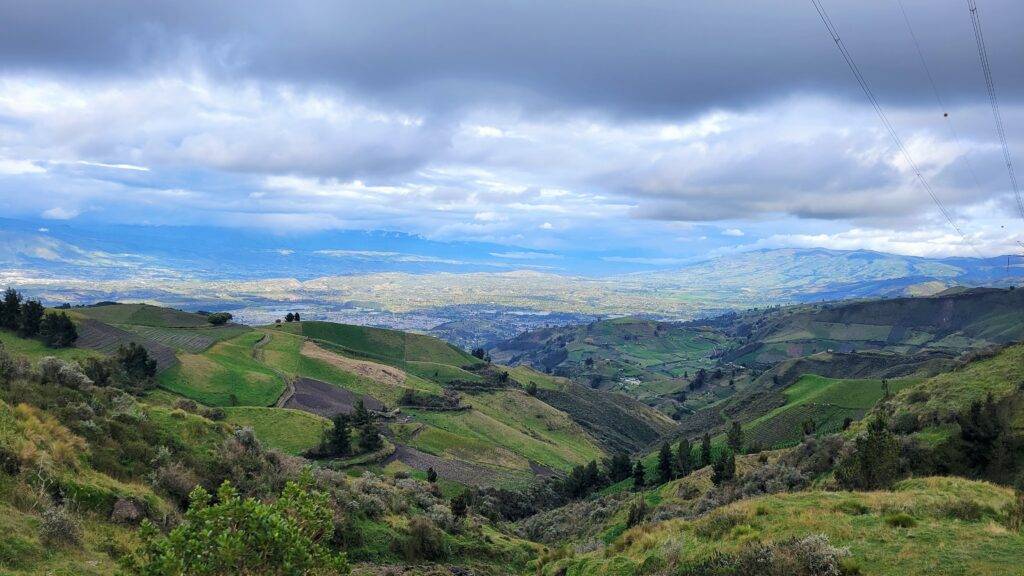
If you’re spending any time in Quito (even just at the airport) or the surrounding areas, you need to be conscious of altitude sickness. As the second-highest capital city in the world, Quito is very high in elevation, and other towns (such as Quilatoa), are even higher.
This elevation can easily make you sick and dehydrated, so you should be proactive about keeping the effects at bay. I recommend taking altitude sickness medication before and during your time in the Andes. I noticed the impact when I missed just one dose, and they were not fun (nausea, exhaustion, headaches, etc.). Thankfully, you can easily find preventatives for this online or at your local Wal-Mart, and they’re very affordable.
You need to protect your valuables!
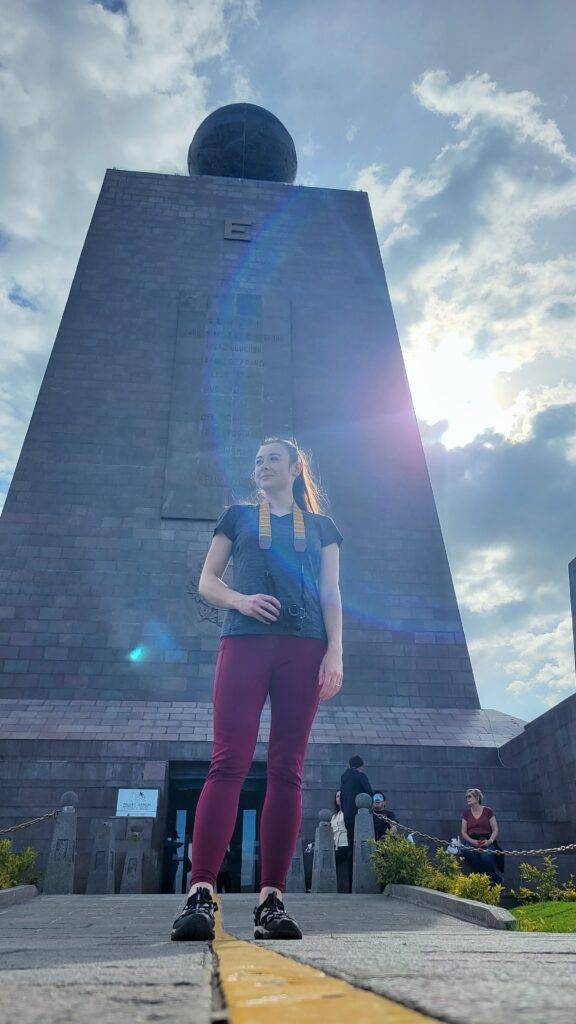
Unfortunately, Ecuador is a hot spot for pickpocketing and outright theft, and tourists make prime targets. Do yourself a favor and follow a few basic guidelines to keep yourself from becoming a victim on your trip:
- Leave your passport in your hotel safe and carry a paper copy instead.
- Leave extra cash in your hotel safe or TSA-locked bag, and divide any money you take between multiple discreet locations. I use hidden short/pants pockets, a hidden backpack pocket, and an under-shirt security belt.
- Bring an anti-theft bag or backpack with limited exterior pockets and a combination lock.
- Avoid leaving wallets or phones in your back pocket.
- Attach your phone to a neckstrap or tether for extra security
- Keep your camera tucked away when you’re not using it, and be sure to secure it with a neckstrap and keep a hand on it whenever you have it out.
- Beware of the monkeys in the Amazon! They’ll woo you with your cuteness, then grab your camera or phone, too!
You cannot drink tap water in Ecuador!

Whatever you do, do not drink the tap water. Do not brush your teeth with it. Don’t open your mouth in the shower. Just don’t. The results will not be pleasant!
Depending on where you stay, your hotel may provide bottled water for you to brush your teeth and drink in your room, free of charge. Additionally, each of our hotels offered fresh water in the lobby that we could use to fill up our water bottles whenever needed.
If you don’t have that option, you’ll need to invest in plenty of bottled water throughout your trip. It will be an extra expense, but it’s better than getting sick or dehydrated. I know some people use LifeStraws to drink tap water and do just fine. But if you plan to use a filtered water bottle, double-check that it filters toxins and parasites, not just chemicals or metallic taste.
You should also be extremely cautious about buying street food that may have been made with unboiled tap water. Since the locals do drink the water, it’s not as big a deal, but you will need to be very careful. And finally, double-check the seal on any bottled water you buy from a street vendor–some people will resell used water bottles with tap water!
Things to Know for Maximizing Your Trip to Ecuador
There are tons of exotic fruits to try!
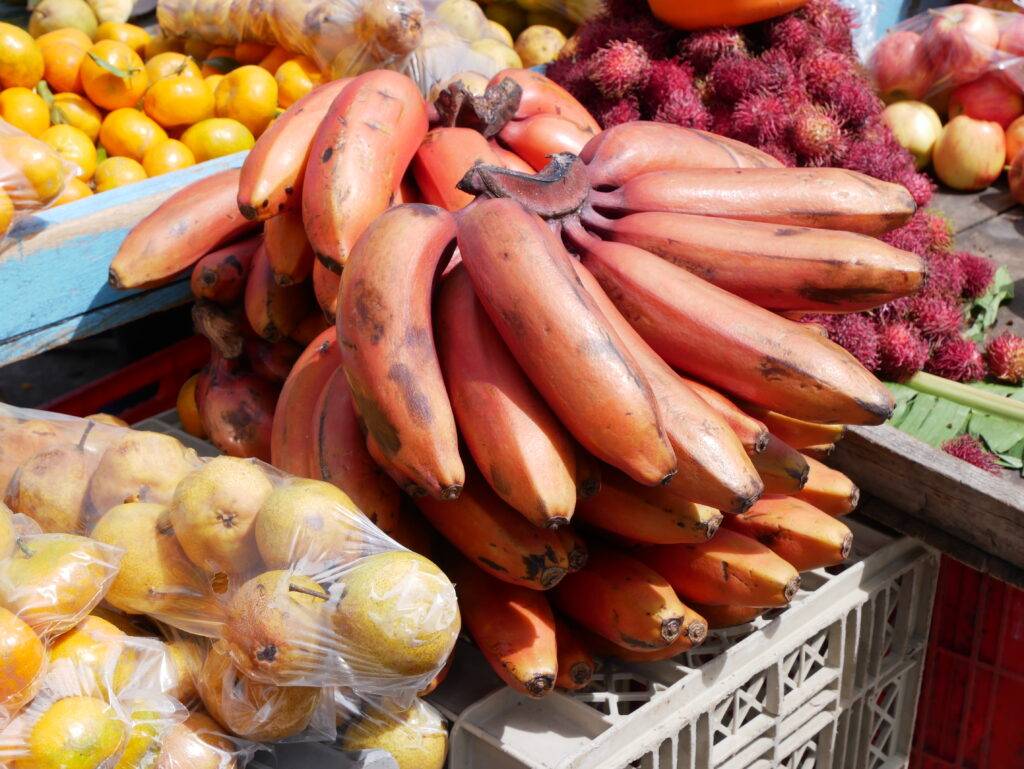
I was almost overwhelmed by how many new and delicious fruits our guides introduced us to during our 10-day adventure. Our favorite was Guanabana (also called Soursop), which we got as a juice at nearly every opportunity. But we also fell in love with taxo (aka banana passionfruit), naranjilla, maracuya, guayaba, and mora (South American blackberries).
We didn’t try a single fruit we didn’t like! They all tasted delicious in juices, pastries, and ice creams. So don’t be shy–try as many as you can–I guarantee they’ll be better than what’s at home in your international market!
Cash is almost always the best way to pay throughout Ecuador.
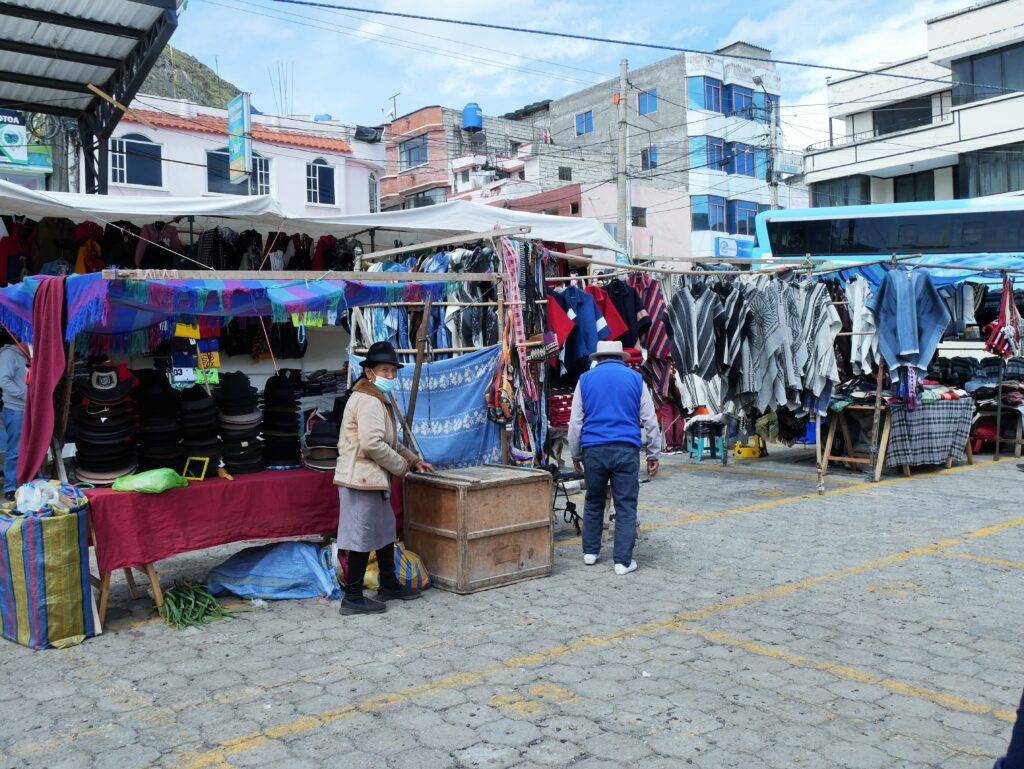
Cash is king in Ecuador, even in the cities, so you’ll want to bring plenty on your trip. I generally dislike carrying around a bunch of cash, but in the end, I wished I’d brought more. Here’s why:
Many local vendors won’t have any card payment option, so there’s a risk of going through your cash very quickly. Vendors that do offer card payments often charge a 2-7% transaction fee, so you’ll be stuck paying more, even if your card doesn’t have international fees.
It wasn’t too hard to find an ATM to withdraw more cash, but each transaction cost us extra money from our bank and the ATM fees. I think we lost about $100 in fees that we would’ve saved if we’d just brought more cash.
On a positive note, the official currency of Ecuador is the American dollar, so if you’re traveling from America, you won’t have to pay any exchange fees to stock up on cash.
There are four major regions of Ecuador to visit.
Ecuador is a gorgeously diverse country with four distinct regions you can visit. Each area has different scenery and animals, and the people have different traditions, food, and physical characteristics. The four major regions are the Andes, the Amazon, the Galapagos, and the Pacific Coast.
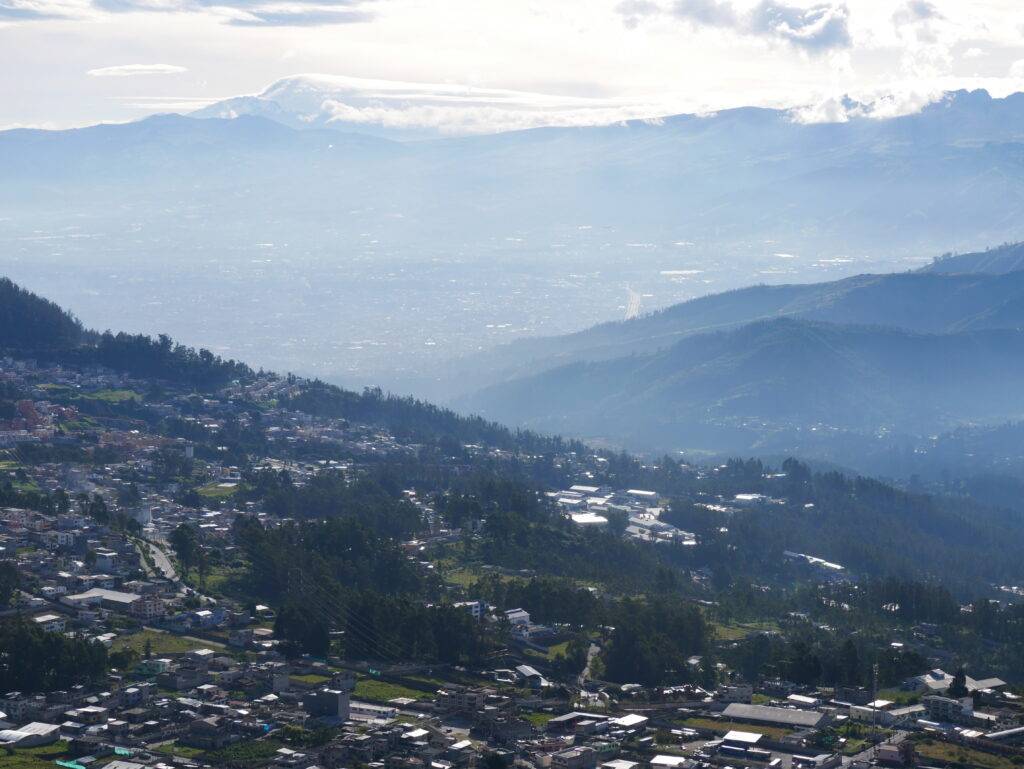
In the Andes, you’ll see gorgeous mountains and volcanoes nearly everywhere you turn and have the chance to eat foods like roasted guinea pig and potato soup.
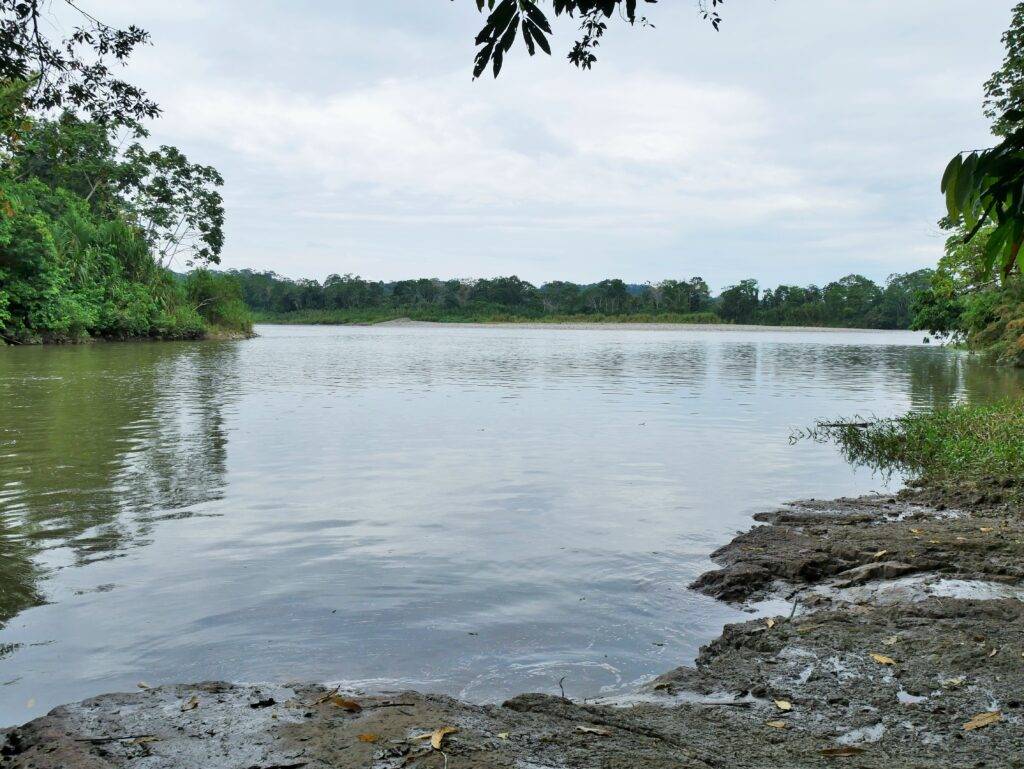
The Amazon is a never-ending sea of green trees dotted with waterfalls and bright tropical flowers. Depending on where you’re at, you may be surrounded by mountains or in a low-land area near one of the many rivers. They have the most adventurous menu, ranging from basic meals like bolones (fried plantain balls) and rice to raw palm beetle grubs, ants, and fermented corn drinks (chicha).
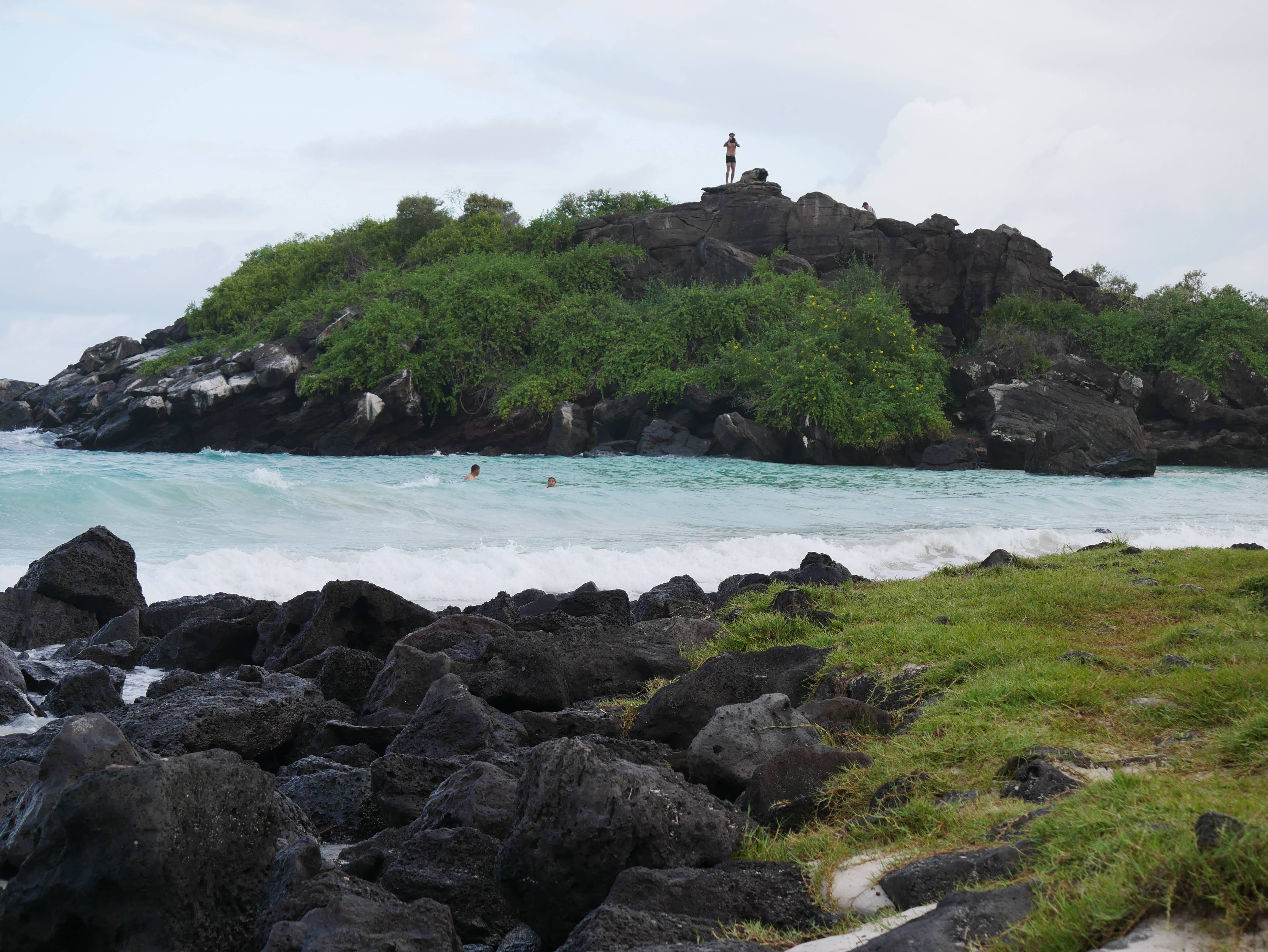
The Galapagos is truly a one-of-a-kind place, and you can only access it from mainland Ecuador. You’ll see both lava rock and white-sand beaches, stunning blue waters, and a plethora of incredible creatures, like sea lions, sea turtles, and marine iguanas. The food here leans heavily toward seafood and traditional rice and bean dishes.
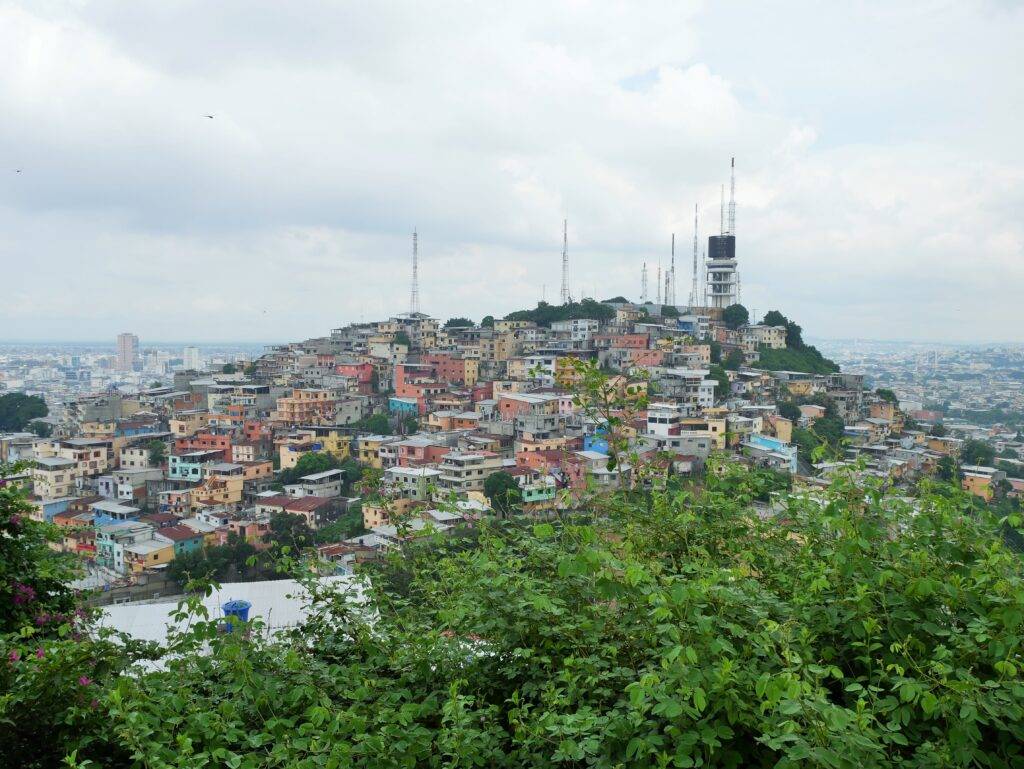
Finally, the Pacific Coast is much less extreme, but you’ll still see expansive rivers, sweeping hills with colorful houses built right into the sides, and, of course, the Pacific Ocean stretching off into the distance. Here, the menu is also seafood-heavy, with ceviche and encebollado ranking high on the list of things to try.
If you can, plan to visit each region to truly see what Ecuador is like!
General Things to Know About Ecuador
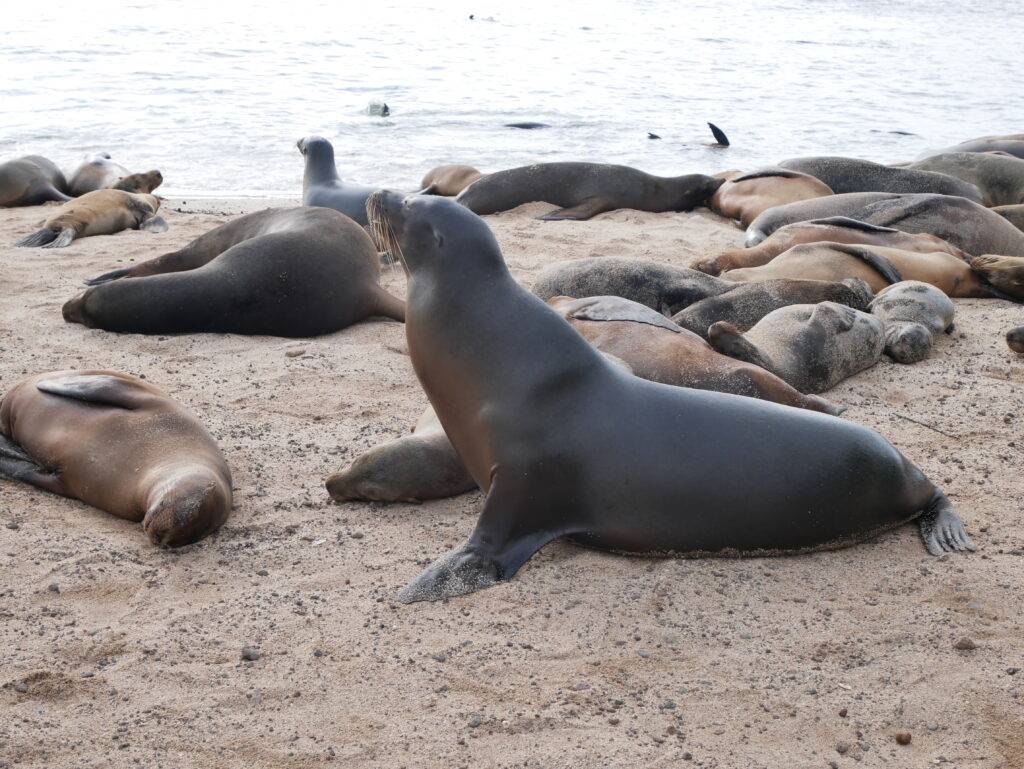
Everything with toilet paper is weird.
It’s no secret that toilet paper can be tricky in certain countries, but Ecuador took things to a whole ‘nother level. (Sigh)
As you probably expected, you can’t flush toilet paper in most parts of the country. If you happen to be staying at a fancy hotel with newer plumbing, it’s possible. But the general rule is to throw your toilet paper into the waste basket when you’re done. Fair enough.
But what really caught me off guard (again and again) was how widely unavailable toilet paper was in public environments! We kept running into one of three scenarios that made bathroom breaks rather inconvenient:
- You need to grab toilet paper at a common dispenser before entering a stall.
- You have to buy sheets of toilet paper (for a few cents) at a coin-only dispenser outside of the bathroom.
- You have to bring your own toilet paper because they’re either all out or it was never supplied in the first place.
Needless to say, public restroom breaks were always quite the adventure for the 10+ ladies in our tour group! Thankfully, there was a family that had some experience with this kind of thing, and they actually brought miniature toilet paper rolls with them on the trip. They found them on Amazon and made a habit of carrying one around in a purse or backpack for situations just like this. I’d recommend you do the same!

You will need Spanish knowledge, a guide, or Google Translate to communicate.
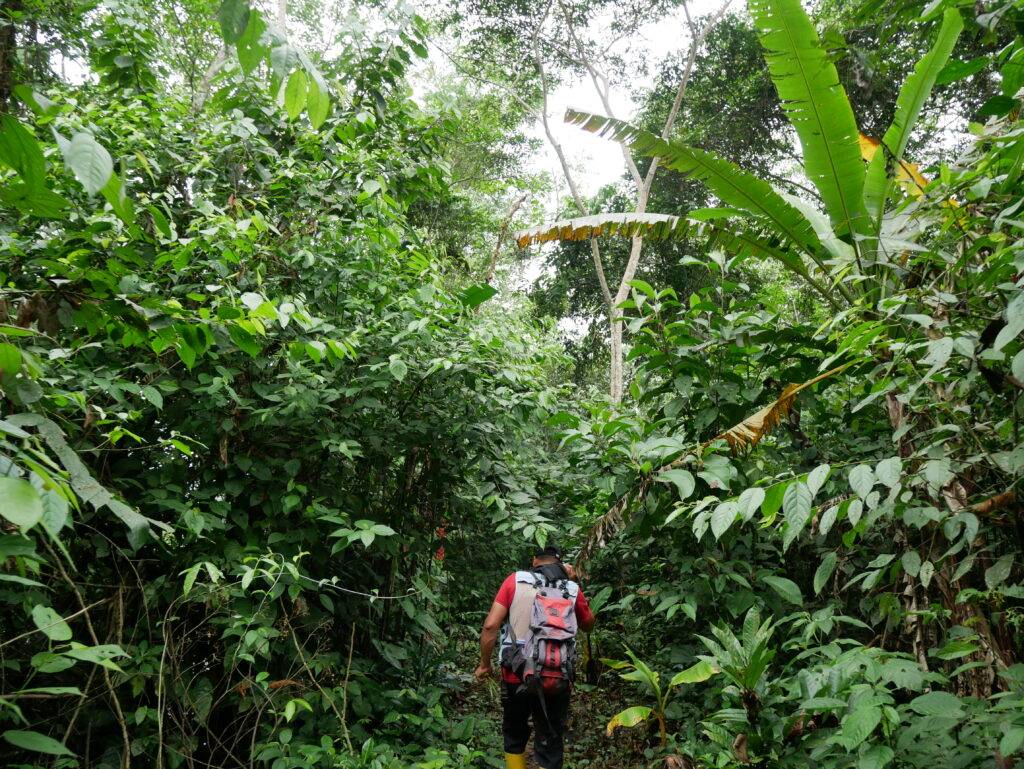
This shouldn’t come as too much of a surprise, but I think Americans get accustomed to other countries speaking English. This is somewhat understandable because many tourist-centric countries encourage their people to learn it, and some countries even teach it in their schools. However, this is by far not the case in Ecuador.
No matter where we went in all 4 regions of Ecuador, we needed our Spanish. Our hotels tended to have one to two representatives who spoke good to excellent English. But out in the communities, it was rare to find someone who spoke English, even among the younger people.
We relied quite a bit on our bilingual guides when we were with them, but thankfully, we also speak enough Spanish to order food, carry on casual conversations, and ask for directions. (Thanks, Duolingo!) This allowed us to explore on our own fairly easily, but it also gave us more motivation to keep learning Spanish for future adventures!
If you’re not confident in your Spanish skills and won’t have a guide, you’ll need Google Translate. Unfortunately, this isn’t always accurate since idioms and certain phrases don’t translate well. But it’s better than nothing and will definitely help you out in a pinch.
It can rain at any time during the rainy season.
This shouldn’t be a shocker, but I feel like a lot of people overlook this. Yes, you may be visiting the Andes mountains or the beaches of the Galapagos, but the rainy season will still find you! Thankfully, were blessed with mostly beautiful weather throughout our trip, but we did get stuck in a couple of rainstorms and were very glad that we had our packable rain jackets on hand.
From October to May, you should be prepared for rain at any time–even on a day that starts out with blue skies. The weather is notoriously fickle, so unfortunately, you’ll never really know what to expect. It can even be completely different within a couple-mile radius. One day in the Galapagos, we had sunshine and blue skies out at sea, but our friends who stayed back in San Cristobal were stuck with rain the entire day! It just goes to show that the weather does the unexpected–so expect rain!
Local transportation is very affordable.
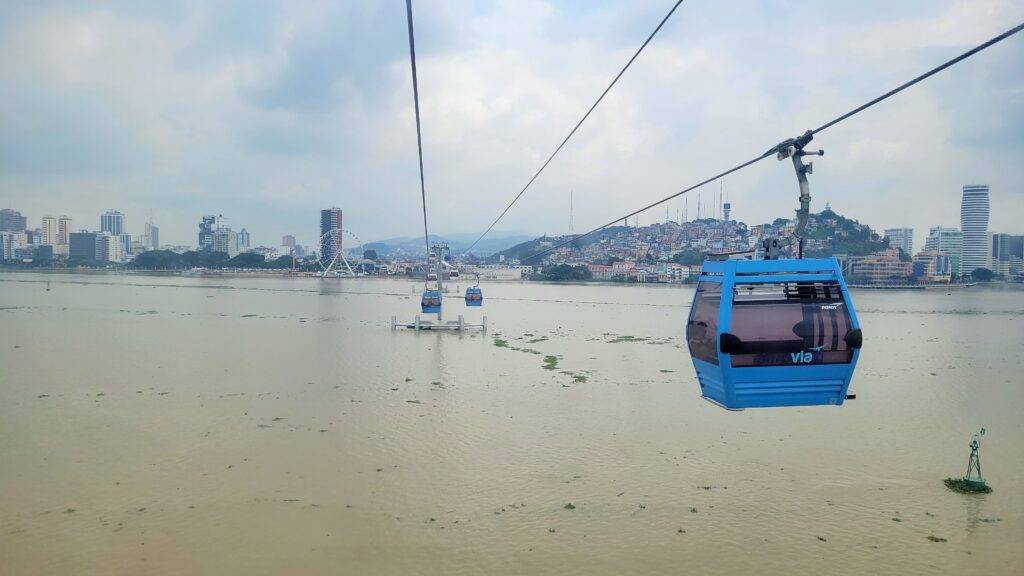
In most cases, we found that walking was the best way to take in the sights and sounds of Ecuador. However, we did need public transportation on occasion and were very happy with the pricing. For example…
- A taxi to anywhere in San Cristobal is $4.
- A two-hour double-decker bus tour in Guayaquil is $8 per person.
- The Guayaquil cable cars cost $1.50 round-trip.
- Taxis in Quito start at $1.50 and cost $1.50 per km.
- A taxi ride around town in Tena costs about $1.
Closing Thoughts about Ecuador
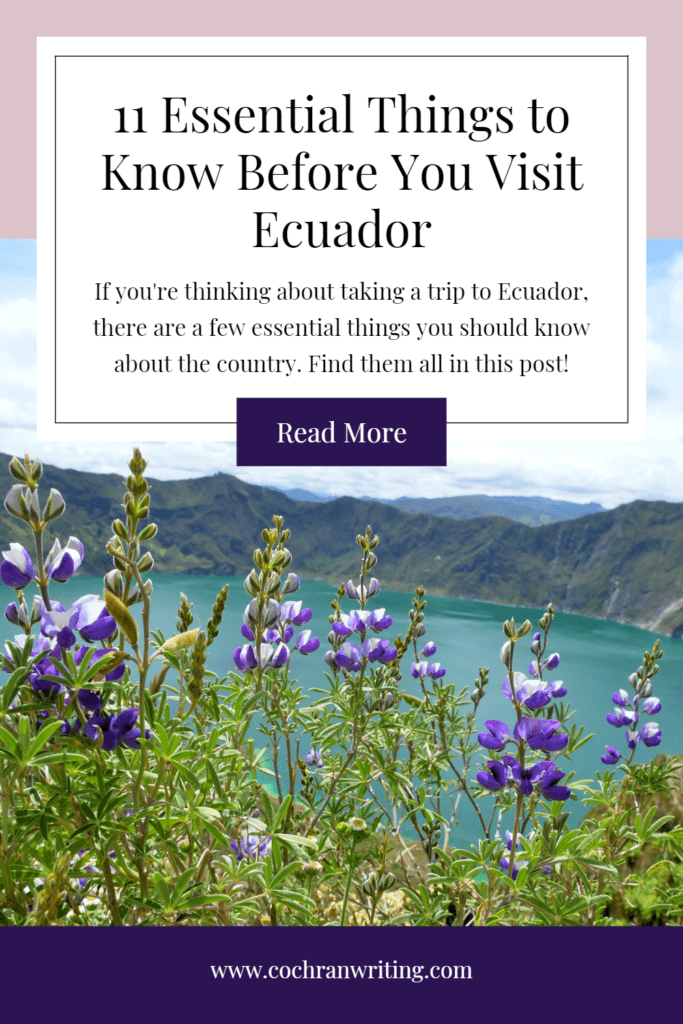
These are the 11 essential things you need to know before you visit Ecuador! I hope you were able to learn something from our experience and that these tips will be helpful as you plan your adventure. If you keep them in mind, you’re almost guaranteed to have a great and stress-free trip. After all, Ecuador is such a magical country, it’s hard to not enjoy it!
I love hearing from my readers, so please feel free to drop questions or comments below. I’d especially love to hear if you found this post helpful or not because that helps me know what kind of content to create in the future.
Be sure to subscribe to the blog before you go, so you can stay in the loop for all our upcoming Ecuador posts and other content! It’s 100% free, and you’ll get some special perks for being part of the community!
Sign Up for Updates from Carried Away Travels
Thanks for stopping by, and I hope you’ll be back soon! Happy travels!
Ready for More? Check Out These Recent Posts!
- How to Spend 3 Days in Dublin & Northern Ireland

- 11 Essential Things to Know Before Visiting Iceland

- My Top 12 Travel Tools For Saving Time & Money

- Dublin Exploration Hack: Big Bus Tours

- The Best 5-Day Colorado Itinerary

- How to Maximize Your Next Workcation: Top Tips

Make Vacation Planning Easier
Download my Vacation Planner or Travel Blogger’s Planner today!


